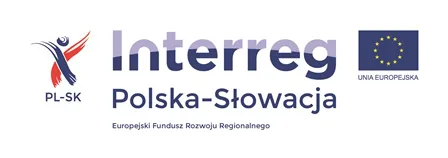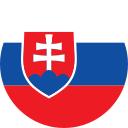
The specificity of microprojects

In the 2014-2020 financial perspective, micro-projects in the Carpathian Euroregion will be implemented under two umbrella projects implemented
in axis 1 and 3.
Axis 1 "Implementation of micro-projects in the field of protection and development of natural and cultural heritage in the Carpathian Euroregion and WJT in Prešov"
Leading Partner : Association of the Carpathian Euroregion Poland
Project Partner : Prešov Self-Government Country
Project number : PLSK.01.01.00-18-0001 / 16
Implementation period : 01/10/2015 - 30/06/2022
Total project value : EUR 6 275 399.15
Axis 3 "Implementation of microprojects in the field of education in the Carpathian Euroregion and WJT in Prešov"
Leading Partner : Association of the Carpathian Euroregion Poland
Project Partner : Prešov Self-Government Country
Project number : PLSK.03.01.00-18-0002 / 16
Project implementation period : 01/10/2015 - 31/12/2018
Total project value : EUR 697 266.57

Micro-projects are small, cross-border, non-profit projects. They are used to develop and strengthen cooperation between local communities on both sides of the border and to create foundations for the implementation of "large projects".
Micro project
It is a separate project implemented under the Umbrella Project by at least two entities - at least one on each side of the border, except for the European Grouping of Territorial Cooperation, which may apply for funding as the so-called sole beneficiary.
In the Interreg VA Polska-Slovakia program, individual micro-projects and joint micro-projects (including own micro-projects) can be implemented.
Individual microproject
A micro-project prepared and implemented with the participation of partners from both sides of the border, but with the financial participation of only one of them. The lead partner principle does not apply to individual micro-projects. The value of co-financing from the ERDF - from PLN 2,000 up to 50 thousand EUR.
Joint microproject
A micro-project characterized by: joint preparation, joint staff, joint implementation and joint financing. Joint micro-projects follow the lead partner principle or the sole beneficiary principle. The value of co-financing from the ERDF - from PLN 2,000 up to 100,000 EUR.
Own micro-project
A specific type of joint microproject in which a Lead Partner and / or an Umbrella Project Partner participate as Lead Partner.
In the financial perspective for 2014-2020, micro-projects in the Polish-Slovak borderland will be implemented under umbrella projects implemented in two priority axes of the Program: axis 1. Protection and development of the natural and cultural heritage of the border area and axis 3. Development of cross-border education and learning for a lifetime . Umbrella projects will be implemented under the following partnerships:
- Association of the Euroregion "Tatry" with the Higher Territorial Unit in Prešov and the Higher Territorial Unit in Žilina,
- Association of the Carpathian Euroregion Poland with the Higher Territorial Unit in Prešov,
- Beskidy Region Association with the Higher Territorial Unit in Žilina.


Financing
More than EUR 23 million has been allocated to the financing of micro-projects from the European Regional Development Fund (ERDF) in the 2014-2020 financial perspective.
Sources of funding
Micro-projects are financed by the European Regional Development Fund, the state budget and the beneficiaries' own resources as follows:
- from ERDF maximum 85%
- from the state budget of the Republic of Poland a maximum of 5%
- applicants' own contribution at least 10%
Below we present the arrangements for the minimum and maximum value of micro-project co-financing from the European Regional Development Fund:
- individual microprojects - min. EUR 2,000 - max. 50,000 EUR
- common microprojects - min. EUR 2,000 - max. EUR 100,000.
Preference will be given to the implementation of joint micro-projects, which will be reflected in the number of points that can be obtained during the qualitative assessment.
Types of supported undertakings
Compared to previous years, micro-projects in the financial perspective 2014-2020 are distinguished by greater thematic concentration and the principle of being results-oriented. For micro-beneficiaries, this means a narrower and more precisely described scope of activities that can be co-financed and greater responsibility in relation to the output indicators, which are to be the result of implemented micro-projects.
Types of activities - axis 1 natural and cultural heritage
- Construction or modernization of cross-border recreational infrastructure in the vicinity of cultural institutions, monuments, landscape and national parks that are part of cross-border tourist routes (e.g. creation of new and modernization of existing cross-border tourist routes: bicycle paths, hiking trails, nature and landscape routes and greenways , thematic cultural routes and related infrastructure, viewpoints, "Park and Ride" points, parking spaces close to paths and trails and cross-border integration of paths, etc.)
- Joint cross-border renovation and conservation projects, modernization of cultural heritage objects located on cross-border tourist routes;
- Cooperation programs between institutions, including the mutual exchange of movable and museum objects (e.g. temporary and touring exhibitions, joint ticket systems);
- Establishing and developing cross-border intersectoral cooperation for the heritage of the border area between entities in the field of preservation and protection of cross-border cultural and natural resources: integrated projects in the border region, organization of thematic conferences, seminars and workshops, cooperation between institutions and promotion of joint activities for the protection of natural resources, including protection of biodiversity);
- Development and implementation of common cross-border standards / guidelines for the protection and preservation of cultural and natural heritage;
- Joint cross-border educational activities promoting cultural and natural heritage;
- Actions for cross-border integration and building a common identity through, for example, coordinated educational programs / initiatives including activities devoted to historical and cultural heritage and ecology, as well as sports and language courses;
- Educational activities in the field of risk management and security;
- Joint training for guides, conservators and representatives of institutions involved in activities for the protection of the natural and cultural heritage of the borderland;
Joint cross-border promotion devoted to the cultural and natural heritage of the border area and increasing the number of their visits (e.g. organization and participation in joint events, fairs, conferences, workshops and seminars); - The use of ICT tools to preserve and promote cultural and natural heritage resources, e.g. interactive information points intended for the general public or addressed to a specific target group, applications for mobile phones, websites, creation of cross-border ecological products and e-products and services; digitization and digital exchange of resources, multimedia presentation of cross-border heritage, exchange of expertise on digitization of cultural heritage;
- Actions for the common protection of the natural environment, including protection and restoration of the proper condition of species and natural habitats, ensuring the maintenance of ecological connectivity, stopping the influx of alien species, stopping the degradation of natural and landscape values.
Types of activities - axis 3 cross-border education
- Joint cross-border programs / initiatives for students and teachers in specialist and vocational education institutions (e.g. cross-border programs / initiatives of specialist and vocational education carried out by schools, internships, apprenticeships, pilot and scholarship programs, study visits for students in institutions and schools for specialist and vocational education);
- Joint development and promotion of specialist and vocational education offer;
- Implementation of cross-border activities supporting the so-called social inclusion and social participation, integrating the border area as a functional area; courses, postgraduate studies, programs and training;
- Cross-border exchange of good practices in the implementation of programs / initiatives for the needs of specialist and vocational education and model solutions in education and lifelong learning institutions, as well as good practices in the field of education management and financing of education systems;
- Activities aimed at identifying needs in the context of specialist and vocational education (e.g. identification of common problems and gaps in the educational offer, implementation of joint educational processes and activities in the field of career counseling on the cross-border labor market, as well as adapting educational programs to the current requirements of the labor market, including cooperation between institutions in the field of internships and apprenticeships).
You can find more about the specific rules for the eligibility of activities in the Micro-beneficiary Handbook .


Support area
Projects, as a rule, should be implemented by entities based in the area implemented by the Carpathian Euroregion together with the Higher Territorial Unit in Prešov, i.e .:
Poland - Carpathian Euroregion:
- Krosno subregion: Jasło poviat, Krosno poviat, Sanok poviat, Leski poviat, Brzozowski poviat, Bieszczady poviat,
- Przemyśl subregion: Przemyśl poviat, Lubaczów poviat, Przeworsk poviat, Jarosław poviat,
- Rzeszów poviat and the city of Rzeszów (Rzeszów subregion).
Slovak side - Self-governing Prešov Region:
- Period Snina, Period Humenné, Period Stropkov, Period Medzilaborce, Period Svidník, Period Vranov nad Topľou, Period Prešov, Period Sabinov
The lead partner / micro-beneficiary and the micro-project partners should, in principle, come from the above-mentioned area of the Umbrella Project. The participation of entities from outside this area or from outside the Program support area is possible, as long as it is justified in terms of the micro-project objectives, and provided that the micro-project will be implemented in the area of a given umbrella project or will bring benefits to it. The share of these entities may amount to a maximum of 20% of the allocation for the implementation of micro-projects in a given Umbrella Project.
It is also possible to implement the activities provided for in the micro-project on the territory of a third country or outside the support area - in this case, these are the expenses from the so-called twenty%. Such a micro-project or activities must have a positive effect on the area of support.
Applications for micro-project co-financing may be submitted by:
- entities with legal personality, in accordance with applicable national law,
- entities without legal personality to which the parent entity (having legal personality) will grant a power of attorney and who will assume financial responsibility for the micro-project implemented (micro-project PW / micro-beneficiary is an entity without legal personality),
- entities with legal personality applying for funding on behalf of the subordinate unit that will implement the micro-project. The micro-project application specifies the entity that implements the micro-project (substantively and / or financially).
Entities implementing micro-projects may only be institutions whose main activity is not commercial, i.e .:
- government and self-government administration bodies, their unions and associations,
- units established by the state or local government to provide public services,
- vocational training institutions,
- research units,
- universities,
- churches and religious associations,
- non-profit non-governmental organizations,
- European Groupings of Territorial Cooperation
Each of these entities must:
- be a non-profit entity,
- have a stable and sufficient source of financing so that it can meet the objectives and activities set out in the micro-project,
- be directly responsible for the preparation and management of the microproject.
Only micro-projects implemented in the Polish-Slovak partnership, characterized by a wide cross-border impact, real cooperation between partners and sustainable results, can receive funding.






